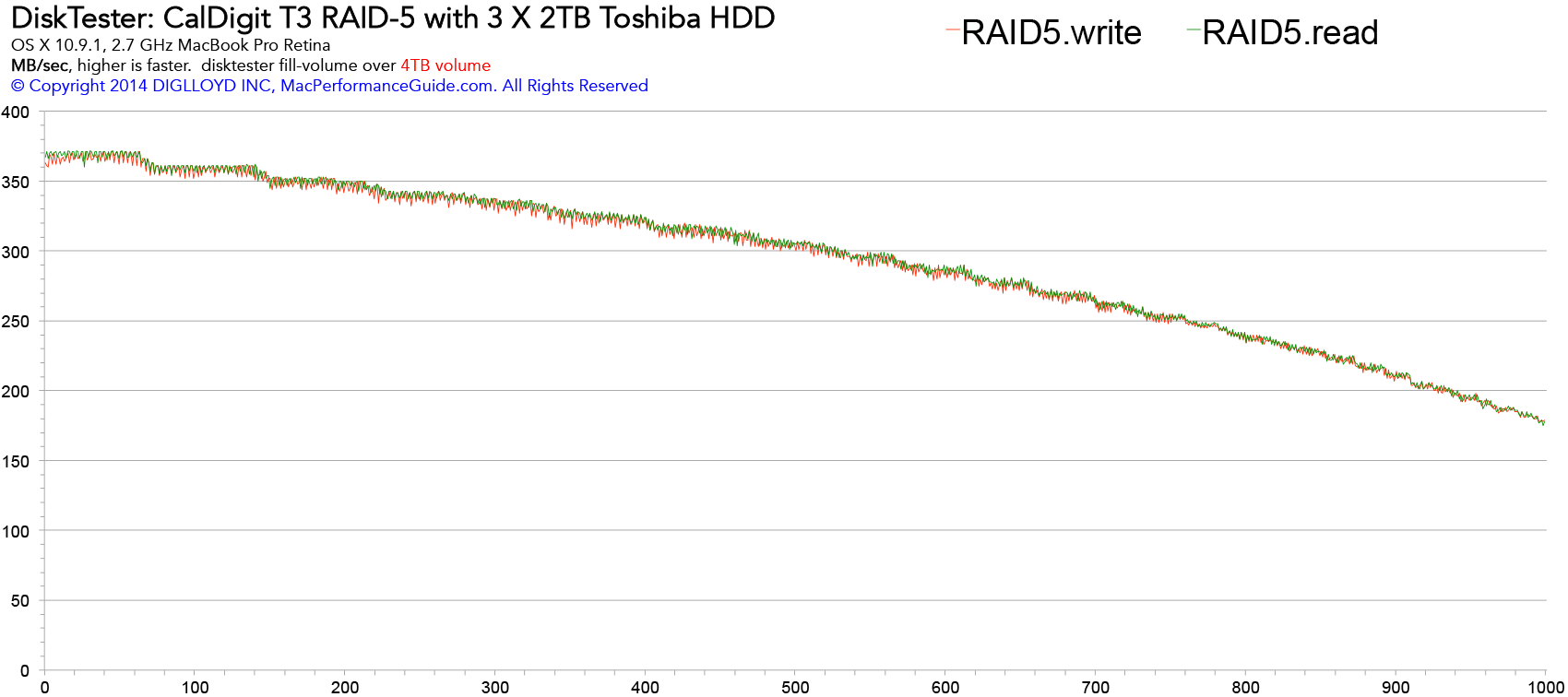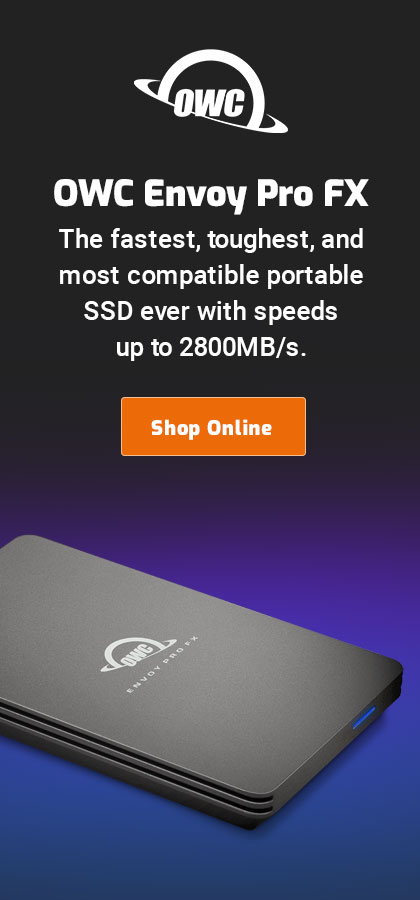
$220 SAVE $130 = 37.0% Western Digital 16.0TB Western Digital Ultrastar DC HC550 3.5-in… in Storage: Hard Drives
|

|

|

|

|

|

|

|

|

|
CalDigit T3: 3-HDD RAID-5 (Striping with Parity)
Related: hard drive, RAID, RAID-0, RAID-5, SoftRAID, storage, Thunderbolt, weather events
A RAID-5 uses one drive of N for parity information. It can be thought of as a RAID-0 stripe with one parity drive (“striping with parity”), for fault tolerance. Should one drive fail, the RAID degrades to a RAID-0 stripe.
The best speed that can be expected of an N-drive RAID-5 is the speed of an (N-1) RAID-0 stripe, because the parity drive must also be written to. However, even hardware RAID-5 might struggle with that goal; there is some overhead.
Results
Tested with three fast Toshiba 7200 rpm DT01ACA200 series drives. Single-drive speed of the drives used is ~180MB/sec on the fast portion of the drives (left side of graph).
A RAID-5 volume of 4TB was created using a beta version of SoftRAID 5, using three 2TB drives.
The SoftRAID 5 driver delivers performance right at the best possible speed of around 360MB/sec — impressive. The falloff over the remaining capacity is an unavoidable function of hard drive speed across the capacity (it would not occur with SSDs).

Seagate 22TB IronWolf Pro 7200 rpm SATA III 3.5" Internal NAS HDD (CMR)
SAVE $100

 diglloydTools™
diglloydTools™

